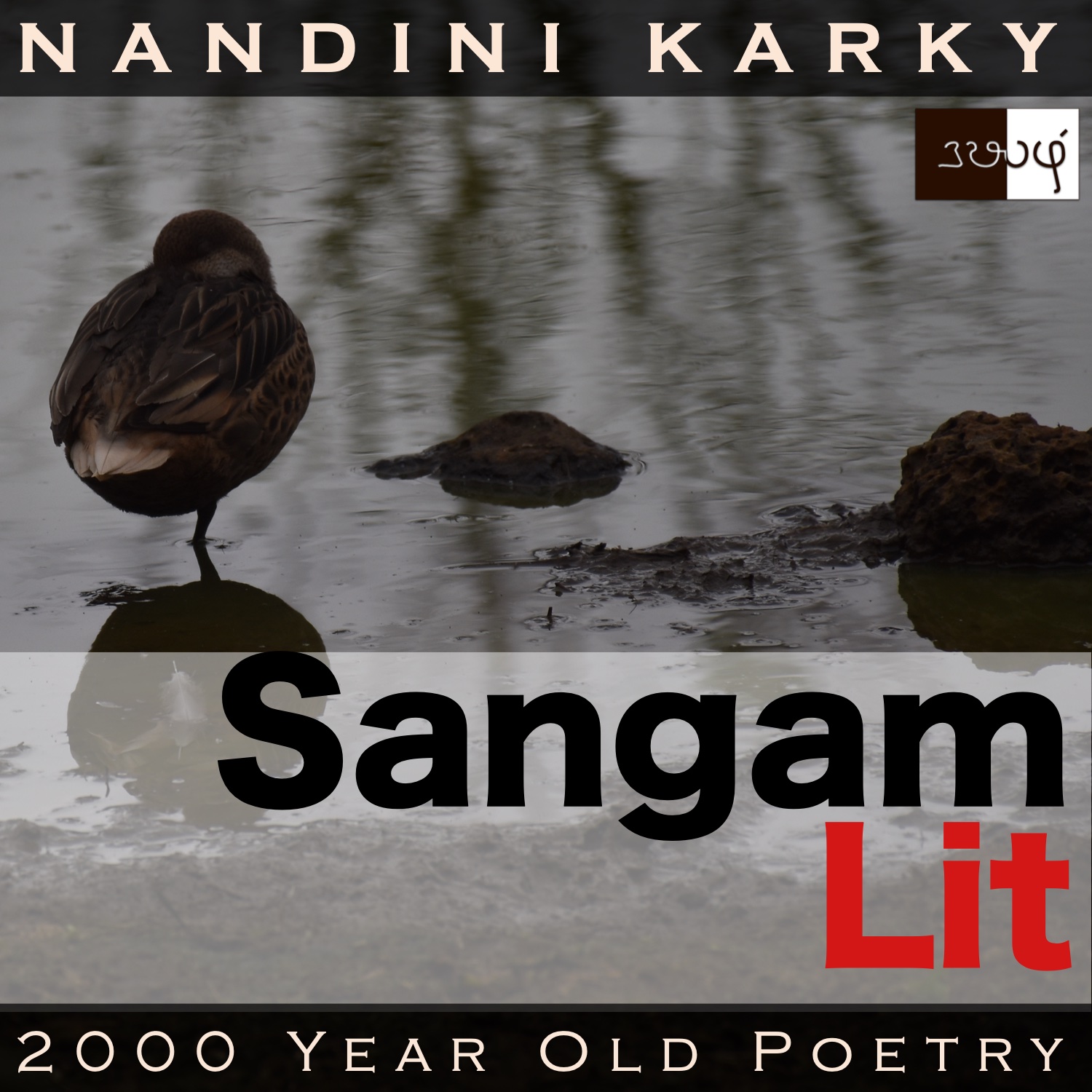Podcast: Play in new window | Download
Subscribe: Apple Podcasts | Spotify | Amazon Music | Android | iHeartRadio | Email | TuneIn | RSS | More

In this episode, we perceive shock and disbelief in the voice of a mother, as portrayed in Sangam Literary work, Kurunthogai 356, penned by Kayamanaar. Set in the drylands of ‘Paalai’, the verse speaks in the voice of the lady’s mother, on hearing about the lady’s elopement with the man.
நிழல் ஆன்று அவிந்த நீர் இல் ஆர் இடைக்
கழலோன் காப்பப் கடுகுபு போகி,
அறுசுனை மருங்கின் மறுகுபு வெந்த
வெவ் வெங் கலுழி தவ்வெனக் குடிக்கிய
யாங்கு வல்லுநள்கொல் தானே-ஏந்திய
செம் பொற் புனை கலத்து அம் பொரிக் கலந்த
பாலும் பல என உண்ணாள்,
கோல் அமை குறுந் தொடித் தளிர் அன்னோளே?
‘How is she able to do this?’ is the wondering question at the core of the verse! The opening words ‘நிழல் ஆன்று அவிந்த நீர் இல் ஆர் இடை’ is a stack of adjectives to describe the geographical region for it means ‘burning without a drop of shade, is that waterless, difficult-to-cross, drylands path’. In ‘வெவ் வெங் கலுழி’ meaning ‘muddied, hot puddle’, we see the only source of drinking water in that arid region. The central question mentioned earlier appears in ‘யாங்கு வல்லுநள்கொல் தானே’ meaning ‘how did she get the ability to do this?’. Affluence waves to us in ‘செம் பொற் புனை கலத்து’ meaning ‘a well-carved vessel made of red gold’. There’s talk of an ancient food item in ‘பொரிக் கலந்த பாலும்’ meaning ‘puffed rice mixed with milk’. Doesn’t it remind you of a modern breakfast staple from the West? Ending with the words ‘தளிர் அன்னோளே’ meaning ‘she, who is like a tender leaf’, the verse welcomes us to listen with empathy.
What superhuman activity is that tender maiden indulging in and surprising her mother? The context reveals that the man and lady were leading a love relationship and the man was trysting with the lady for a while. Soon circumstances arose such that the only way to protect their relationship was for the man to elope with the lady. After succeeding in persuading the lady, the man takes her and leaves to his village. Later, hearing this news, the lady’s mother says aloud, “On the shadeless, searing, waterless, inaccessible path, protected by the man, who wears anklets, hurrying near a barren pond, she gulps from a muddy puddle of hot, hot water. How did she gain the strength to do this? She, who used to refuse even milk mixed with puffed rice, brought to her in a red-gold vessel, saying that it was too much for her – the young maiden wearing well-etched, small bangles – she, who is akin to a tender leaf!” With these words, the mother sketches her disbelief at her daughter’s sudden parting away with the man.
Let us venture beyond the words into the deeper meaning of what’s being said. The mother starts by bringing before our eyes the path the lady is traversing with her man. This is an inaccessible path, where there is not a spot of shade, and the sun is beating down upon the place, and to add to the burning misery, there seems to be no water in sight. It’s in such torturous surroundings that the lady is hurrying under the protection of her man, who is described as one, wearing warrior anklets. She’s hurrying because thirst assails her and she’s journeying to what was once a pond, but now, they find it empty. Nearby though, there’s a muddy puddle with burning hot water, and it’s this water that the lady is gulping down without a pause, the mother details.
After describing the actions of her daughter in the drylands, the mother rewinds to the past to elaborate another scene with the lady. Here, there are helpers surrounding the lady, while holding a red gold vessel with milk and puffed rice within, asking the lady to eat some. However, she seems to be in no mood to indulge them for she refuses saying that won’t do for her. Even that rich food, she wouldn’t partake, the girl, who is akin to a freshly sprouting leaf, and now, how is she able to drink that muddy water in the drylands, the mother wonders. This is a classic verse which highlights how parents see their children as the helpless, little things they brought into the world and how they are unable to make the mental images of their children grow as fast as the children really do.
Another aspect that strikes me here is how parents and caretakers tend to worry about children eating and press them to eat more food than the kids want to. Seems like this has been going on for more than two thousand years. If it was ‘puffed rice and milk’ in a red-gold bowl with swarming attendants then, now, it would be ‘cornflakes and milk’ with the iPad or TV entertaining the little kids. I believe it’s a protective instinct not to let the children starve that drives the caretakers so. But when there is plenty, we always misjudge. If we could allow ourselves to believe that the little ones will eat when hungry, and not resort to feeding them at any cost, as in the case of distracting them with gadgets, then, the kids will never lose that innate sense of hunger and fullness that they are born with. Curious how an age-old poem on elopement has put us on the path of reflecting on the management of eating habits in children!




Share your thoughts...